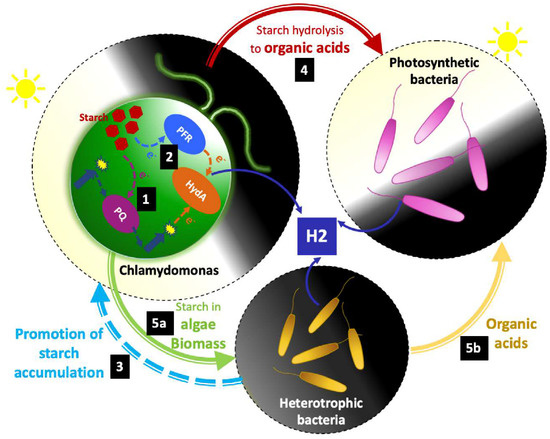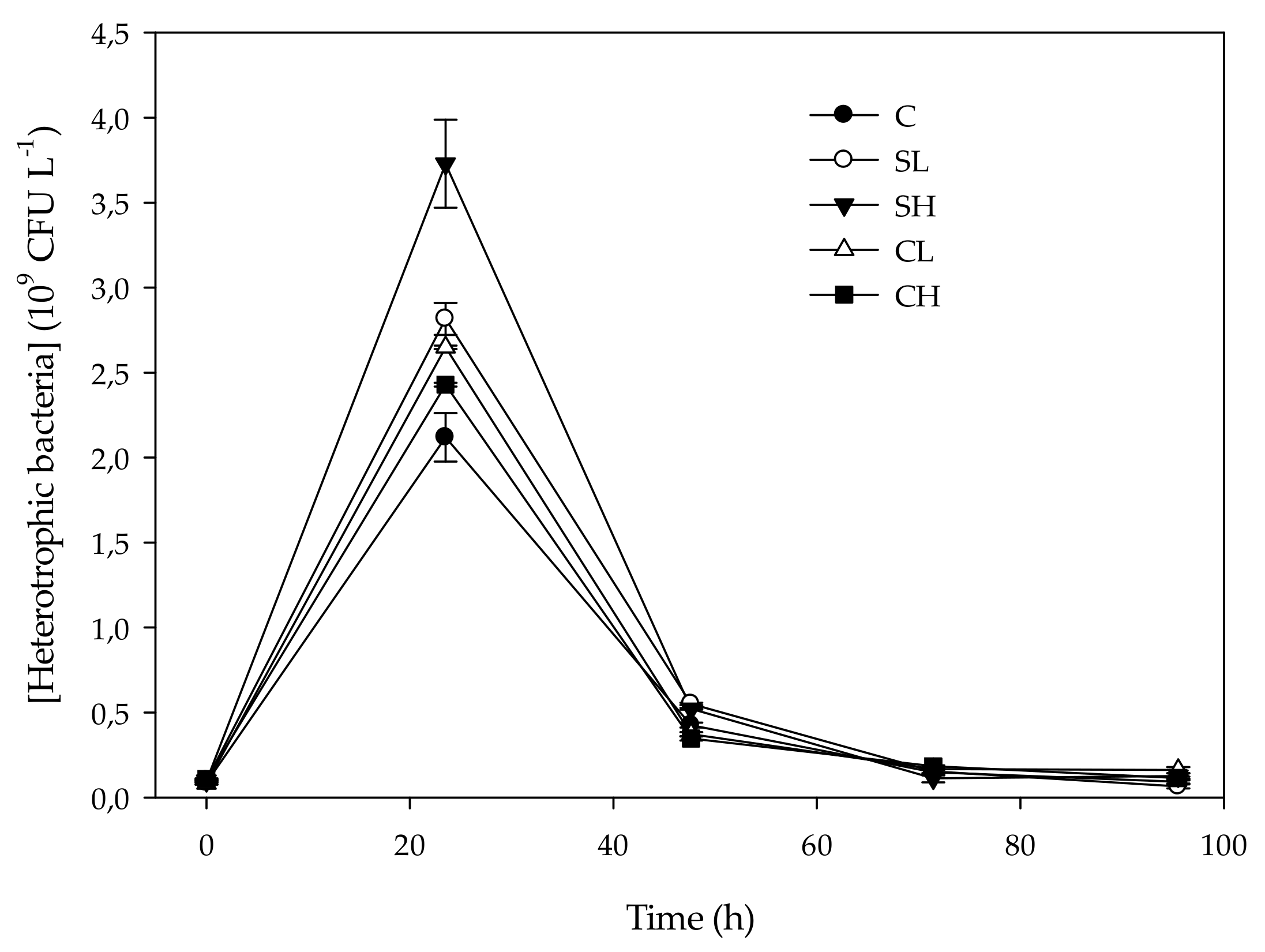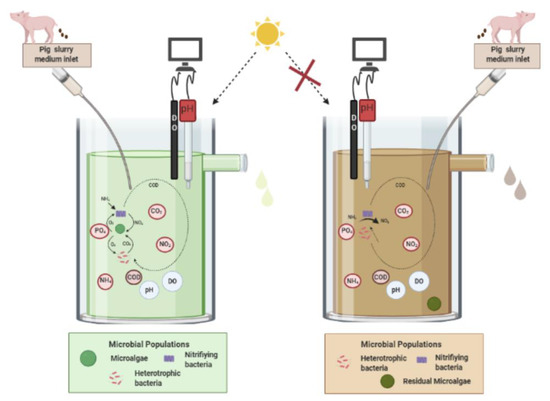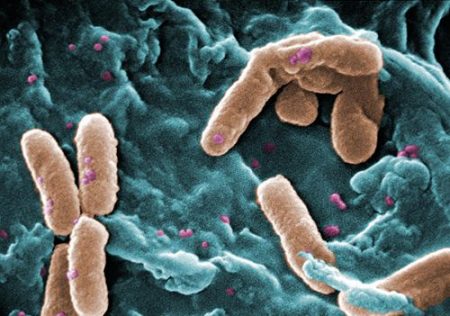Explain Some Differences Between Heterotrophic Bacteria and Cyanobacteria
Bacteria do not contain chlorophyll while cyanobacteria contain chlorophyll-a. The main difference between archaebacteria and eubacteria is that archaebacteria are usually found in extreme environmental conditions whereas eubacteria are found everywhere on earth.

The Species Composition Of Culturable Heterotrophic Bacteria Dominated Download Table
They obtain energy directly or indirectly from other organisms.

. Cyanobacteria are capable of photosynthesizing. The source of energy in autotrophs is either sunlight or chemical. Bacteria play important roles in decomposing unavailable nutrients into available nutrients suggesting that they contribute to cyanobacterial blooms Zhao et al 2012.
Autotrophs can store light energy and chemical energy. An autotroph is a group of organisms capable of producing their own food by utilizing various substances like water sunlight air and other chemicals. Some bacteria have cell-surface proteins that recognize DNA from closely related species and then incorporate it in its own genome.
A fungus can be either a single celled or a very complex multicellular organism. This article examines 1. This is a subgroup called cyanobacteria also called blue green algae and they are photosynthetic.
In the present study we found a clear distinction between the heterotrophic bacteria associated with the two periods of the cyanobacterial bloom. Cyanobacteria are autotrophic and can obtain their energy through photosynthesis. Summary Of The Difference Between Autotrophic And Heterotrophic Organisms As a summary you can see 3 differences between autotrophic and heterotrophic organisms that are fundamental.
Cyanobacteria are capable of photosynthesizing. The neutral community model had a good fit to the community composition of heterotrophic bacteria R2 069 whereas it could not produce a significant model for the community composition of cyanobacteria. Photoautotrophs or photosynthetic.
Since cyanobacteria are prokaryotic cells so of course they do not have chloroplasts. Cyanobacteria also known as blue-green algae are a group of free-living photosynthetic bacteria. Apart from energy requirements both types of bacteria need a carbon source to synthesize their food eg.
Fungi are living organisms from the large group of eukaryotic organisms. Autotrophic organisms make their own food through photosynthesis or chemosynthesis while heterotrophs depend on autotrophic organisms for their food and use. Carbon dioxide and other.
The two different types of autotrophic bacteria are. The rest of the eubacteria can not make their own food so they are heterotrophic. Bacterial communities were dominated by photoautotrophic cyanobacteria which comprised of sequence abundances whereas heterotrophic bacteria included members of the Alphaproteobacteria Actinobacteria Acidobacteria Betaproteobacteria Bacterioidetes Gammaproteobacteria Deinococcus-Thermus.
Are referred as blue-green algae too. Thiosulphates Na 2 S 2 0 3 or some organic compounds are used to obtain reducing power. Both cyanobacterial groups had higher rates of phosphate uptake per surface area than did the heterotrophic bacteria.
But most of the bacteria are heterotrophs. We determined local biotic and abiotic lake variables as well as lake age glacial history and distance between sites. Therefore mutualism between cyanobacteria and bacteria may be one of the factors that enhance the competitive advantage of cyanobacteria.
Heterotrophic bacteria had the lowest uptake rates of ATP and phosphate per cellular P quota. A heterotroph is a group of organisms that obtain their food from other organisms and are not capable of producing their own food. The key difference between bacteria and cyanobacteria is that bacteria do not produce free oxygen during their photosynthesis while cyanobacteria are capable of producing free oxygen during the photosynthesis.
They cannot move from their place. These are placed in the secondary or tertiary level in the food chain. I Both bacteria and cyanobacteria are prokaryotes ie they have nucleus without nuclear membrane lack membrane-bound plastids possess 70S ribosomes lack histone proteins lack cell organelles peptidoglycan present in cell wall etc.
Heterotrophs cannot store energy. Synechococcus had the highest rates per cellular phosphorus Pquota for ATP uptake and Prochlorococcus usually had lower rates. Explain with suitable example.
Most photoautotrophs live near the bottoms of ponds and lakes where reduced sulphur or other compounds are in plenty and oxygen content is very low. A laboratory experiment was performed to test whether differences in nutrient and energy demands between picophytoplankton and heterotrophic bacteria can explain the apparent inverse biomass. Similarities of Cyanobacteria with Bacteria.
The distinction of these periods was based on limnological parameters water retention time and transparency and cyanobacterial community composition Microcystis spp. Some bacteria are able to photosynthesize. Some eubacteria true bacteria contain organelles that allow them to gather sunlight.
They use chemical energy to prepare their food. Both archaebacteria and eubacteria are single-celled microorganisms which are usually called prokaryotes. But most of the bacteria are heterotrophs.
Chemoautotrophs or chemosynthetic. The main difference between bacteria and cyanobacteria is that the bacteria are mainly heterotrophs while the cyanobacteria are autotrophs. In contrast some heterotrophic bacteria have also been shown to prevent cyanobacterial growth by preying on cyanobacteria or even halting cyanobacterial blooms Manage et al 2000.
15 rows Cyanobacteria is also known as blue-green algae. Most of the Viruses do not serve any useful purpose. Their chlorophyll molecules are in the cytosol.
A laboratory experiment was performed to test whether differences in nutrient and energy demands between picophytoplankton and heterotrophic bacteria can explain the apparent inverse biomass relationship between these organisms in lakes along gradients of organic carbon and nutrients. -A photosynthetic cyanobacterium was likely consumed by a heterotrophic eukaryote giving rise to the first plastid. Identify the differences between Bacteria Archaea and Eukarya and the evolutionary.
They are placed at the primary level in the food chain. Growth rates and final yield of cells were analyzed in crossed gradients of. They derive energy from sunlight.
Bacteria are single cell plant organisms and they are very small in size measuring about a few microns in size micron0001mm. The key difference between bacteria and cyanobacteria is that bacteria do not produce free oxygen during their photosynthesis while cyanobacteria are.

Cyanobacteria And Heterotrophic Bacteria Have Been Clubbed Together In Eubacteria Of Kingdom Monera As Per The Five Kingdom Classificatin Even Though The Two Are Vastly Different From Each Other Is This Grouping Of

Total Chlorophyll A Concentration A Synechococcus B And Download Scientific Diagram

Community Composition And Functional Genes Explain Different Ecological Roles Of Heterotrophic Bacteria Attached To Two Bloom Forming Cyanobacterial Genera Sciencedirect

Water Free Full Text Feces From Piscivorous And Herbivorous Birds Stimulate Differentially Phytoplankton Growth Html

Heterotrophic Bacteria In Drinking Water H2o Distributors

Biovolume Concentration Mm 3 L 1 A Heterotrophic Bacteria And B Download Scientific Diagram

Processes Free Full Text Role Of Microalgae In The Recovery Of Nutrients From Pig Manure Html

Pdf Relationships Between Heterotrophic Bacteria And Cyanobacteria In The Northern Adriatic In Relation To The Mucilage Phenomenon

Pdf Heterotrophic Bacteria Dominate The Diazotrophic Community In The Eastern Indian Ocean Eio During Pre Southwest Monsoon
Differences Between Bacteria And Cyanobacteria

Solved Sulfide Oxygen Zones Metabolic Niches Low Aerobic So Chegg Com
Difference Between Bacteria And Cyanobacteria Pediaa Com

Depth Distribution Of Cyanobacteria And Heterotrophic Bacteria In The Download Scientific Diagram

The Species Composition Of Culturable Heterotrophic Bacteria Dominated Download Table

Work Flow For Analyses Of Cyanobacteria And Their Associated Download Scientific Diagram

Photoheterotroph Examples Photoheterotroph Energy Source Here S The Answer Study Nature

Cells Free Full Text Algae Bacteria Consortia As A Strategy To Enhance H2 Production Html

Of Resistant Heterotrophic Bacteria Isolated From Seawater And Sand Download Scientific Diagram